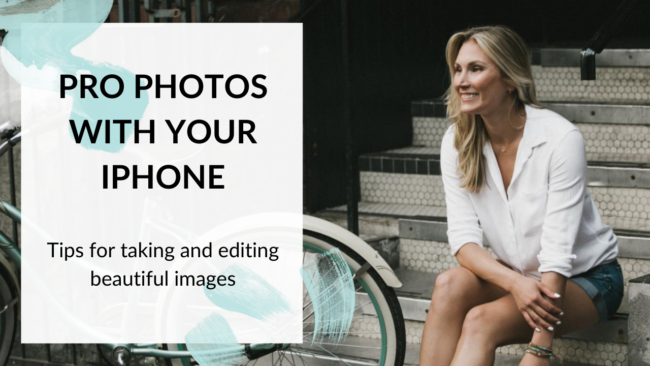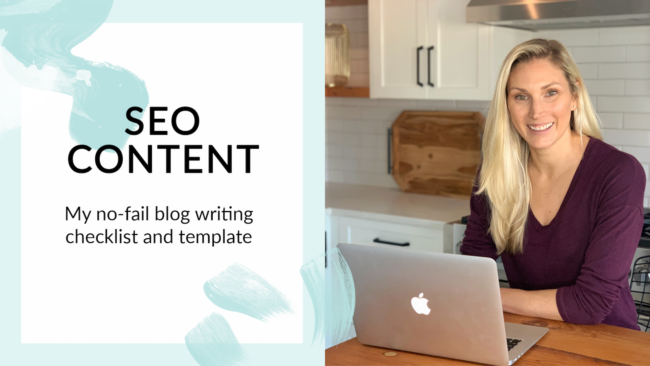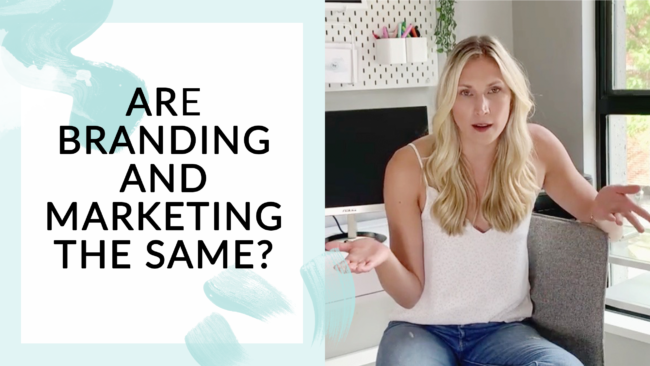Take quality pics with your iPhone
No matter your business, images on social media, your website, and other touchpoints really tell your brand story.
There are more than 95 million photos and videos that are uploaded to Instagram alone each day. Your images need to break through the noise and be as top notch as your business.
The benefits of using a smartphone to create visual content are the cost savings, quick-to-post content, and not needing the expertise to shoot/focus/edit with a DSLR and clunky software. (But keep in mind, there’s a time and place to invest in your business and hire a pro.)
These are my favourite tips, tricks and tools for taking quality pics with your smartphone.
*Scroll to the bottom of this page to watch the video*
1. Lighting is key
A key mistake people make is taking images with poorly balanced lighting. This casts shadows and makes image editing — even with a stock filter — challenging. It will also make parts of the photo hard to see. This is a real bummer for products, clothing or real estate, where key selling features need to shine.
Here’s how to mitigate this in different scenarios:
- Outdoor: Never shoot in broad daylight. Instead, shoot in a shady spot, just after sunset, or on a cloudy day.
- Indoor: Use a ring light or shoot in a well-lit room that doesn’t have direct sunlight. Face towards the light source so that you’re getting light evenly on you or the product.
- Product shots: Place products next to a window. Ring lights can work here but often reflect on products with any metal or glass.
2. Lifestyle shots should be natural
No matter what you’re promoting, lifestyle shots are so, so, so important. I love storytelling, and a photo is the perfect way to show the audience the value of your product in a snap second. Be sure to keep lifestyle shots natural so they don’t look like cheesy stock photos you found in a quick Google search.
Pro tip: Shoot while moving so there’s a bit of energy to your image: walk, spin, sip, bite, laugh, ride.
3. Product shots should be thoughtful
Of course product shots should be clear and minimal on an ecommerce page, but when you’re shooting for your social channels be sure to add a little lustre and storytelling. (Duh, of course this is my advice!)
If you’re shooting a candle, place it somewhere your buyer would love to relax like a bubble bath. Shoot with a close up of the branding and a blurry background of the tub to emphasize the product and add some romance to the lifestyle.
When doing flatlays for social, add in some texture with still life or a piece of fabric. Layer in elements that tell the brand story, like a book and a towel alongside the sunglasses you’re selling.
4. Familiarize yourself with your smartphone’s features
Phone cameras keep getting better and better. As I said above, the main benefit to using your phone is that you can basically just point and shoot without worrying about focus on a DSLR.
Some features that I love for shooting on my own are:
- Portrait mode: this is a great way to do a selfie with a small product, food and beverage, or accessory. You can tone down the level of blur in the background depending on your aesthetic.
- Self timer: Alex only has so much patience, so this is a great way to snap pics when he’s working or I’m home alone.
- Live photos: Combined with the self timer, this gives me the option of multiple images over 1.5 seconds so I can choose the best shot.
5. Get equipment that works for your needs
While you don’t need equipment, there are some key pieces you can buy to really level-up your pic game. This list below will cost you about the same as a two hour session with a pro photog — and you can use it for as long as you’d like.
- Small ring light: great for selfies and Zoom calls.
- Large ring light: great for selfies, filming, ¾ body shots, and products.
- Desk-top tripod: great for taking with you for outdoor shoots, restaurants, fashion shoots.
- Stand-alone tripod: bulkier but great for all of your tripod needs.
- Plain white backdrop: amazing for fashion shoots.
- Printed backdrops: awesome to keep your aesthetic consistent, and great to stories and videos.
- Flat lays boards: these come in simple white and black to every print under the sun. You can by wood looking pieces, grass, sand, marble, you name it.
6. Shoot a variety of micro and macro images
Keep your feed and website interesting by shooting and posting a variety of images with different zooms. Post images that show details or branding, and then zoomed out lifestyle and more landscape images.
Just as headers and changing font sizes help a reader digest smaller pieces, a variety of image perspectives helps a viewer stay engaged.
7. Have a consistent post-production routine
At the end of the day, your images tell your brand story. Be sure to stay consistent with your brand feel from thinking up shoots to adding filters. Your audience and customer should have the same feelings from seeing you online, to chatting with you on the phone and to walking into your space. Colour, lighting, prints, and so many more aspects go into telling that story, so be as consistent as possible.
I hope this helped! Let me know in the YouTube comments section if there’s anything I can help you out with further.



